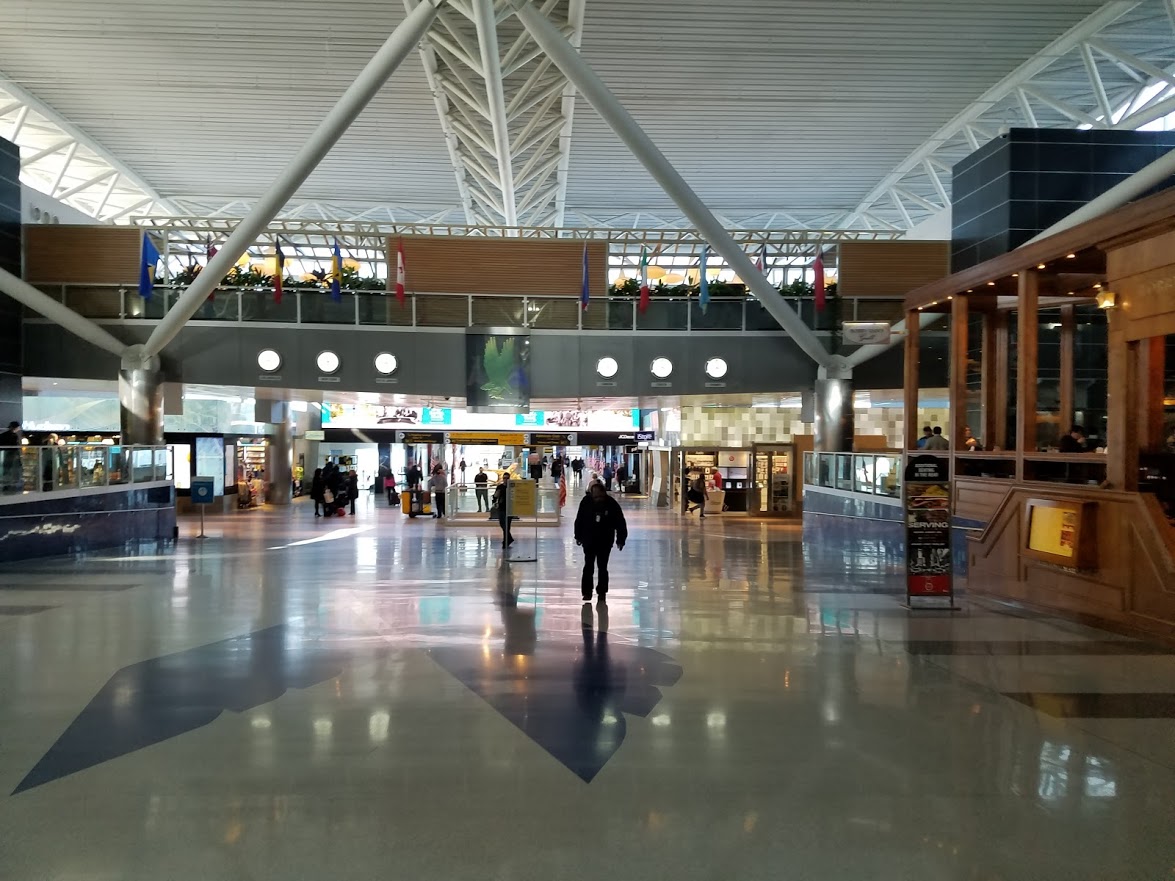US Airways sold much of their operation at New York LaGuardia to Delta for cash and slots at Washington National. They had to give up some of those slots to get government approval for the deal. And they had to give up more slots to get approval for the American Airlines merger. At the end of the day they got a little bigger at National, but traded their irreplaceable position at New York’s close-in airport.
American today could have been a real player in New York. Instead the world’s largest airline doesn’t seem to know what to do – or if they should do anything at all – with the nation’s most important air city.
When US Airways management took over they seemed to think the best strategy would be to back away from competing for business from New Yorkers and be the airline that brought people from other places to New York. They’d compete for business from small cities by timing flights to bring them to New York during the business morning and take them home at the end of the day.

Over the past five years the strategy has shifted to serving business markets from New York. They want to serve business travelers, as any airline looking for a revenue premium does, but fails to realize that business travelers are< leisure travelers. The customers who fly to Los Angeles and London during the week take their families to Florida and the Caribbean on the weekend and for holidays.
It’s unclear exactly what American’s idea of a business market is, though. They don’t serve New York JFK – Zurich. They don’t serve Frankfurt. Or Munich. Or Amsterdam. Or Tel Aviv. There’s no JFK – Detroit, Minneapolis, or Salt Lake. No San Jose, Houston, or Portland.
Or Denver. This last they offered… briefly. Most of their regional feed consists of Embraer ERJ-140s and 145s, 44- and 50-seat regional jets without amenities.
And they keep cutting markets. The latest to go is New York JFK – Orlando, currently served by two daily Boeing 737s, drops from the schedule May 3. American will be down to just one Orlando flight a day — from LaGuardia. Because who ever heard of New Yorkers flying to Florida?
- What’s more, that leaves Miami as the only New York JFK – Florida flight on American
- The LaGuardia – Orlando flight leaves before 7 a.m., so it takes away the option of sticking to American for ‘Thursday/Friday after work to Florida’

When you cut a flight at a hub, your cutting connecting traffic for your other flights. You aren’t just eliminating Orlando – New York traffic, you’re cutting Orlando passengers connecting onto London, Madrid, and Paris. All of a sudden without as much connecting traffic, other flights start not to make as much sense. So you cut one of those, too. And now there’s less connecting traffic for your other flights. So you cut another one of those. And the hub enters a death spiral.
American wants to operate flights they can make money on with non-stop traffic. They can send connections through Philadelphia.
- Except as they cut flights there are fewer and fewer flights they can do this with. Fewer destinations makes the corporate sales team’s job harder.
- It makes it tougher for elite frequent flyers to stay loyal, too.

Ultimately it seems like spending $300 million and adding bus gates isn’t actually necessary for American’s JFK Terminal 8 to get oneworld under one roof, just wait for a few more flights to get cut.


Interesting reading all of the comments. As many have pointed out, AA can’t figure out if they want to be a business airline or a leisure airline. Among business travelers, you can roughly split it between US non-LAX/SFO biz travel and transcon/int’l premium travel. For the former, Delta serves many US markets from LGA *and* JFK. They offer a better domestic product in F and Y, a more reliable operation (even with the challenges of operating in NYC), and far better customer service on the ground and in the air. AA has relegated US business travel mainly to LGA with 737/321s to hubs, and E140s to other smaller markets. In both situations, the product is far from competitive. For the transcon/int’l game (which is what AA seems to be doubling down on), AA offers a quality hard product, but unless you want to go to LAX, SFO, LHR, or GRU, AA is pretty much useless. Delta and United serve many more int’l destinations from NYC than AA, which is fine, but if I want to go to Frankfurt, I do not want to connect to PHL, CLT, or LHR to do so. In fact, that idea is offensive for most–if not all–NYC travelers.
With respect to the so-called death spiral, the proof is in the pudding. Less flights=more senior (read: bad service) crews and combined with fewer destinations, old equipment, unreliable operation means death spiral.
I’ll still use AA to LAX and LHR, but all of my other travel has gone to Delta.
@Gary — So do you promise to stop all the nonsense posts when Parker DOES grow profitability 40% this year? C’mon, make the promise. I dare you. You’ll have to find something else to write about, but that would probably be a good thing for your blog anyway.
BTW, the current analyst estimate (and remember, analysts tend to lowball so companies can beat the estimates) is that AA’s profits will increase by 35% this year. So Doug Parker obviously has believers. But Gary knows better. We’ll see.
@chopsticks I will continue to share my view of the situation. Profit could grow largely on drop in oil, for instance, and grow more slowly than at other carriers — wouldn’t make AA management airline geniuses — so I am not going to make a blanket statement about what I will think about an underspecified future situation. It would be absurd to do so.
If their plan, such as it is, succeeds I will say so — calling out the successes alongside the areas in which they may fall short as I do with all travel companies.
Actually, the world doesn’t begin and end in New York at JFK. A person connecting to Europe from, say, Salt Lake, has other options as to where to connect. It really doesn’t matter if that is New York, Charlotte, Chicago, Miami, Dallas, on American, or on any other hub with another carrier. As for JFK-Orlando, they apparently can’t make money on the route, so why fly it? They can still carry passengers on that route via Charlotte, which is an easy connection. AA is not in a “death spiral” in New York; they’ve made a business decision that PHL is a better location for an international hub; there is less competition there. The passenger flying from Denver to Zurich has no problem connecting in PHL; there is no need to go through JFK.
I’m 23. I have $30000. How can I best use it to make more money: http://comdenetfvo.tk/xatak
[OMG – PROFIT in under 60 seconds: http://v.ht/OAOmwp?&kjkhb=WzXOzmHkFXA
About the JFK-MCO flights AA axed, how many daily nonstops are Delta and JetBlue running on this route?